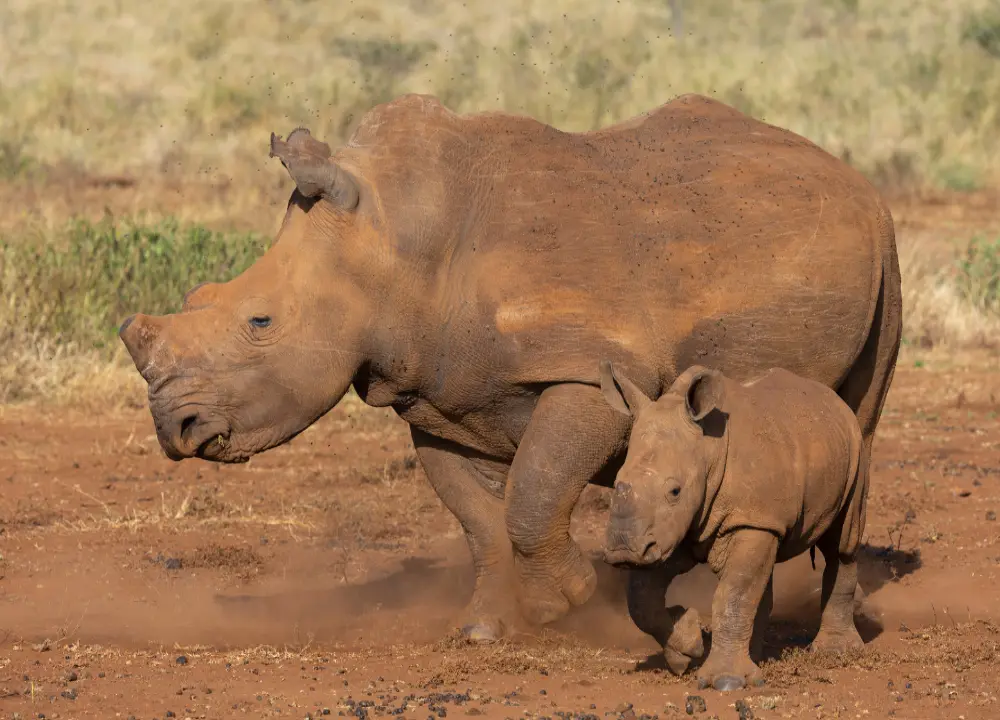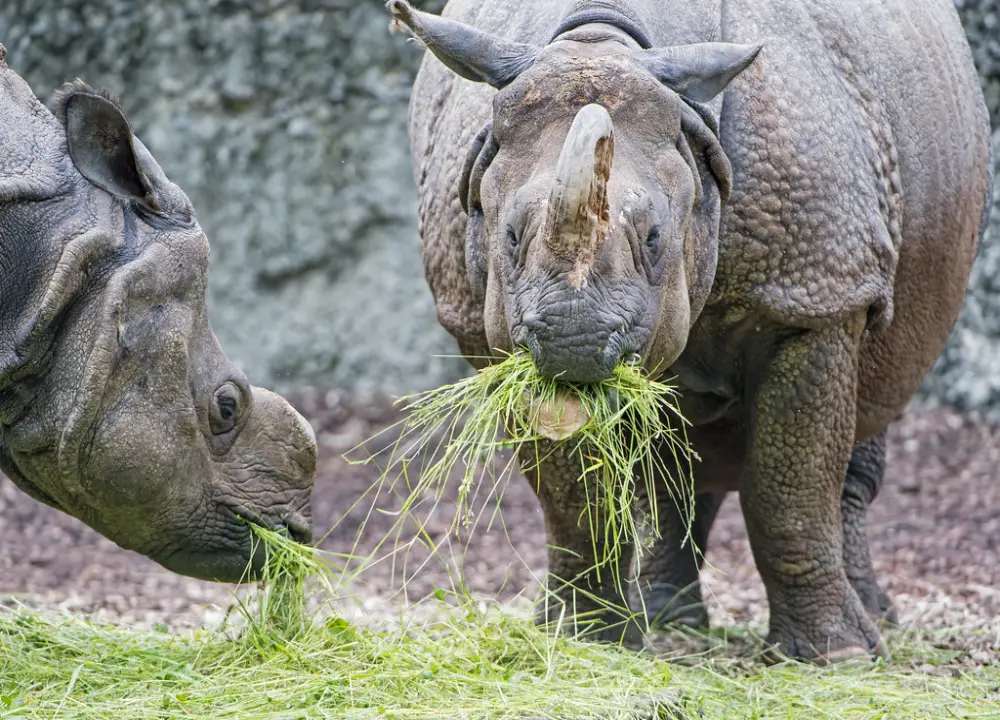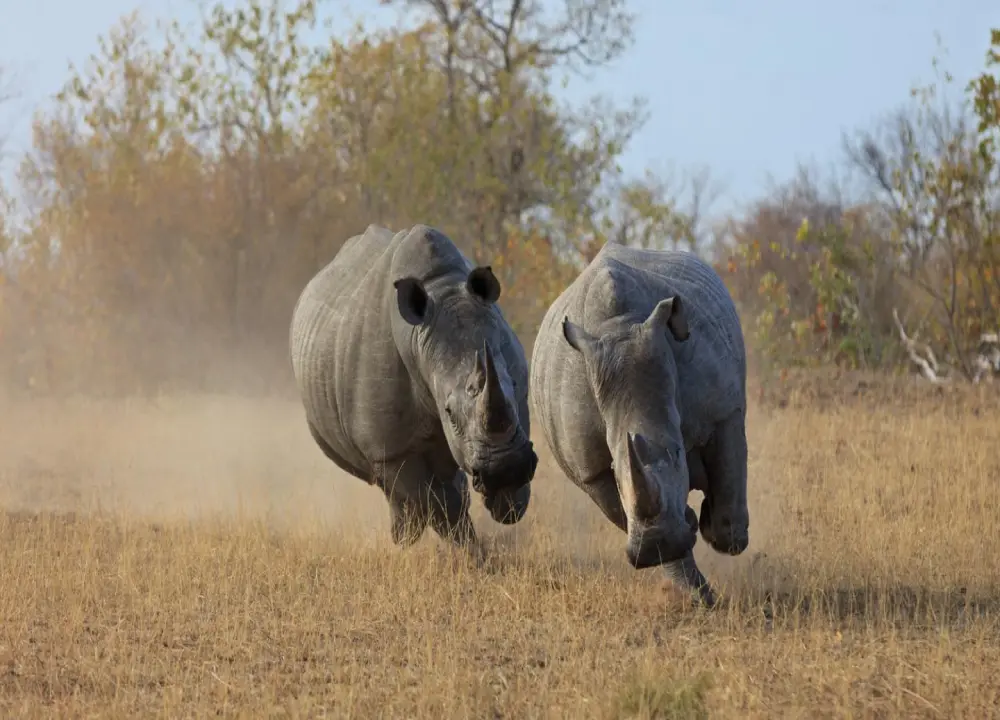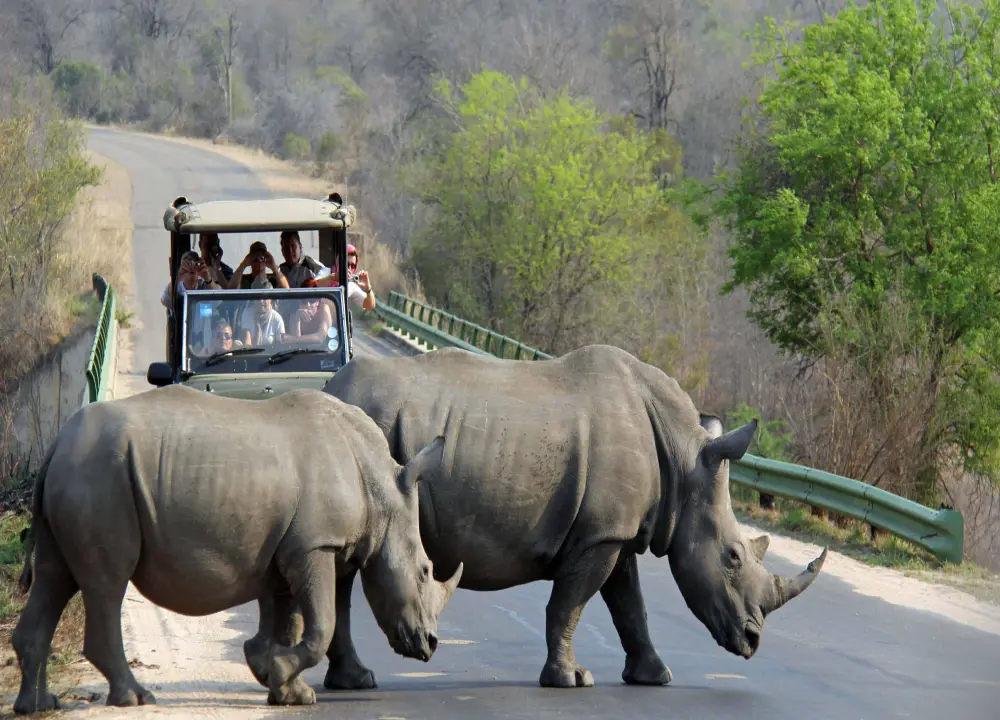
Tanzania Safari
A private safari in Tanzania can offer a more personalized and exclusive experience.....
At Jaynevy tours, we will take you into tours that guarantee close encounters with these beautiful creatures. While keeping you safe at all costs, our guides will give you an amazing tour that will keep you entertained, educated and leave you with an unforgettable safari experience.

The name is "rhinoceros," but we usually refer to these animals simply as "rhinos." It’s much shorter and sounds endearing, like a pet name. Etymologically, the word "rhinoceros" comes from two Greek words: rhino, meaning "nose," and keras, meaning "horn." Simply put, "rhinoceros" means "nose-horned." A rhino has two horns, both located on its nose.
Fun Fact: A rhino’s horn is made of keratin—the same material that makes up your hair and nails (unless you’re a robot!).
The rhino has a strong and powerful build. Although rhinos' sizes vary depending on their species, adult rhinos can reach up to two meters in height at the shoulder and have bodies up to three meters long, weighing as much as 2,500 kilograms! Despite their massive size, rhinos can reach speeds of 50–55 kilometers per hour.
Fun Fact: The Swahili word for a tank (military vehicle) is kifaru. As you might have guessed, the name was inspired by the rhino.
According to taxonomists, there are five species of rhinos:
Maturity and Gestation Periods
Gestation period
The gestation period is usually fifteen to sixteen months although seventeen months have been reported in some parks.

Fun Fact: Both African rhino species have two horns, but among Asian rhinos, only one species has two horns. The Indian and Javan rhinos each have a single horn.
Rhinos occupy a variety of habitats, from deserts (Southern African rhinos) to swamps (Indian rhinos).All rhino species are herbivores, meaning their diet consists mainly of plants.

Fun Fact: Despite being herbivores, rhinos have poor eyesight and rely primarily on hearing and smell.
Most rhinos are solitary except during mating and raising calves, but white rhinos are more social and can be seen in groups of up to ten.

Fun Fact: A group of rhinos is called a "crash".
In Tanzania, rhinos can be found in Ngorongoro Conservation Area, Mkomazi National Park, and Nyerere National Park. The only rhino species in Tanzania is the black rhino. Other rhino hotspots include Tsavo (Kenya), Kruger (South Africa), and Etosha (Namibia).

The table below presents information about where and when you can watch rhinos in Tanzania and other places in Africa.
| Park Name | Country | Type of Rhino | Details | Best Time to See Rhinos |
|---|---|---|---|---|
| Ngorongoro Crater | Tanzania | Black Rhino | This UNESCO World Heritage Site is one of the best places to see the endangered black rhino in the wild. The crater provides a unique ecosystem with abundant wildlife. | All year round, with the dry season (June–October) offering better visibility. |
| Serengeti National Park | Tanzania | White Rhino | While primarily known for its wildebeest migration, Serengeti also houses a small population of white rhinos, with excellent conservation efforts to protect them. | Dry season (June–October) is the best, as rhinos are more visible during this time. |
| Ruinsori Mountains National Park | Tanzania | Black Rhino | Located on the border with Uganda, this park is part of a famous mountain range. Rhinos are more difficult to spot due to dense vegetation, but conservation efforts are in place. | Best to visit during the dry months (June–September) for better access to the rhinos. |
| Mkomazi National Park | Tanzania | Black Rhino, White Rhino | A park dedicated to rhino conservation, Mkomazi has been successful in reintroducing rhinos and has both black and white rhino populations in a pristine savanna ecosystem. | Dry season (June–October), especially early mornings or late afternoons when rhinos are more active. |
| Masai Mara National Reserve | Kenya | Black Rhino | Famous for its dramatic wildlife migration, the Masai Mara also hosts a significant population of black rhinos, though sightings can be rare due to their elusive nature. | Dry season (July–October) is the best time to spot rhinos, especially in the early mornings. |
| Kruger National Park | South Africa | White Rhino, Black Rhino | Kruger is one of the most popular safari destinations in Africa. It's home to both black and white rhinos, and its vast size makes it an ideal spot for rhino sightings. | Year-round, but the dry season (May–October) offers the best visibility due to reduced vegetation. |
| Hwange National Park | Zambia | Black Rhino | Hwange is known for its rich wildlife diversity, including a growing population of black rhinos. The park has dedicated conservation programs to protect them. | Best seen during the dry months (April–October) when animals gather around waterholes. |
Tanzania is home to several key locations where rhinos can be seen, including the Ngorongoro Crater, Serengeti National Park, Ruinsori Mountains, and Mkomazi National Park, which is known for its rhino conservation programs.
As of recent estimates, Tanzania has a small but significant population of rhinos, particularly black rhinos. The number is slowly increasing due to successful conservation efforts in places like Ngorongoro Crater and Mkomazi National Park.
Black rhinos have a pointed, hooked-shaped lip that helps them grab leaves and twigs from shrubs, while white rhinos have a square-shaped lip suited for grazing on grass. Black rhinos are more solitary, whereas white rhinos tend to form larger groups.
Yes, both black and white rhinos are endangered, with black rhinos considered critically endangered. Conservation efforts are ongoing across Africa to protect these iconic species from poaching and habitat loss.
Rhinos are primarily poached for their horns, which are highly valued on the black market for traditional medicine and as status symbols. Despite international bans, poaching remains a significant threat.
You can support rhino conservation by donating to reputable organizations, such as the Rhino Recovery Fund or African Wildlife Foundation, or by participating in ethical wildlife tourism in rhino sanctuaries and national parks.
The best time to see rhinos in Tanzania is during the dry season, typically from June to October. During this period, the rhinos are more likely to be visible as they gather around water sources.
Yes, Southern Africa has significant populations of rhinos, particularly in Kruger National Park (South Africa) and Hwange National Park (Zimbabwe). These parks offer a great chance to spot both black and white rhinos.
Several initiatives are underway, including anti-poaching patrols, rhino horn tracking technology, habitat restoration, and the establishment of sanctuaries like Mkomazi National Park in Tanzania, dedicated to rhino conservation.
In Tanzania, rhino conservation programs focus on both protection and reintroduction. For example, Mkomazi National Park works with local authorities to protect rhinos and has successfully reintroduced rhinos to the wild after decades of local extinction.